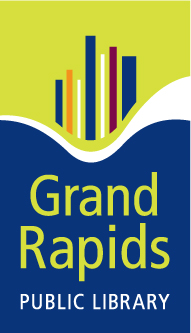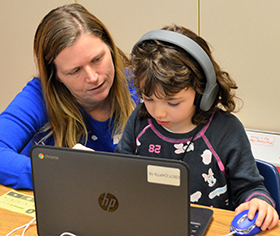Where there is a problem, there is a solution.
So when scores indicated that many Cedar Trails Elementary students would not meet state of Michigan reading guidelines, the school implemented a Reading Now Network program customized for its students.
With guidance from RNN, a program calling for an intervention block for all students every day was rolled out this school year. According to Principal Beth Whaley, it is already showing remarkable success.
Early testing revealed that 80 of Cedar Trails’ 210 first-graders were at least one year behind grade level and were on individual reading plans (IRPs), Whaley said.
After just five weeks on the RNN program, five of the 80 students gained an entire year’s growth and 48 percent gained two or more first-grade reading levels, she said.
 The Road to Reading series explores some of the reading activities you’ll find in our schools as well as difficulties students may face when learning to read. The series also examines early childhood ties to literacy and new initiatives to help all children read. See our other series The Road to Reading series explores some of the reading activities you’ll find in our schools as well as difficulties students may face when learning to read. The series also examines early childhood ties to literacy and new initiatives to help all children read. See our other seriesThe Grand Rapids Public Library is the proud supporter of The Road to Reading Series. |
The Reading Now Network was created by multiple West Michigan districts in 2014 to improve early literacy, and in particular to help boost the reading proficiency in schools with the highest numbers of third-graders falling more than a year below the standard reading level.
The idea was to examine reading and instruction practices at schools with high scores. After initial studies, literacy experts began consulting with schools and helping them find ways to boost students’ reading success.
“We first studied schools that had high achievement and found that they all had some things in common,” said literacy coach Barbara Johnson, who is working with Cedar Trails. “We are bringing some of those ideas here.

How it Works
One thing the data show clearly is that intervening when a child’s reading is below the proficiency level is successful, according to Johnson. “We know that it works.”
And so with her help, Cedar Trails has found a way to increase time for reading interventions for its students by creating a literacy block.
Students are “divided up in just-right reading groups, for a half hour every day,” Whaley said. Students testing at or above reading level are assigned to enrichment groups for that same time period.
Coordinating and orchestrating the plan took a lot of work, but by mid-October it was in place.
The literacy block staffing for first grade includes all classroom teachers, two special education teachers and six intervention specialists. While Cedar Springs’ interventionist staff share schools, adjusting some staff time schedules made it possible to have all six available at Cedar Trails and Bach elementaries each day.
“That gave us us 18 people for the first-grade intervention blocks,” said Whaley. As a result, every student who tests below the reading norm is now able to get exactly what they need for half an hour each day, working in small groups.
An added bonus: Proficient readers get enrichment experiences including poetry, book clubs, Scholastic news and magazines, typing practice, vocabulary games, higher level thinking projects and debates.
Others are Watching
Reading Now Network was based on the principle that watching what worked at school with high numbers of proficient students could be implemented in others. Now some are already watching how Cedar Trails has revamped the way it uses its interventionists.
Eight staff members from Newaygo Schools recently came to observe, and already some have said that they hope to implement similar changes at their home schools, according to Whaley.
There are still some glitches to work out in the Cedar Trails block program, and some staff members are taking a hard look at the changes being made to their regular classrooms. Every corner of the elementary building is being used, with some small groups meeting on opposite ends of the cafeteria and at least one reading group of three students meeting in a storage area.
But overall, Whaley said, “we are super excited about this is working.”
CONNECT














